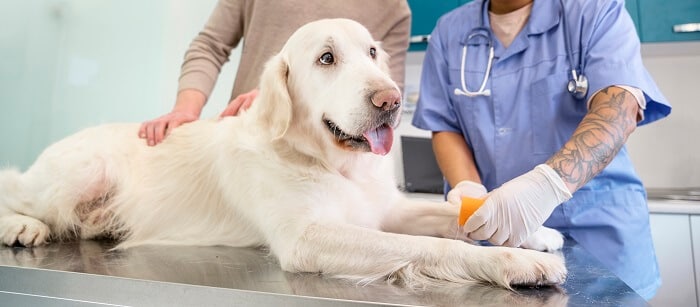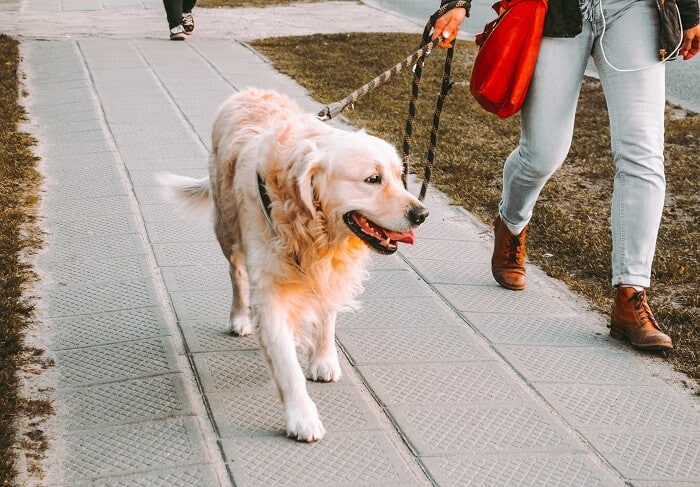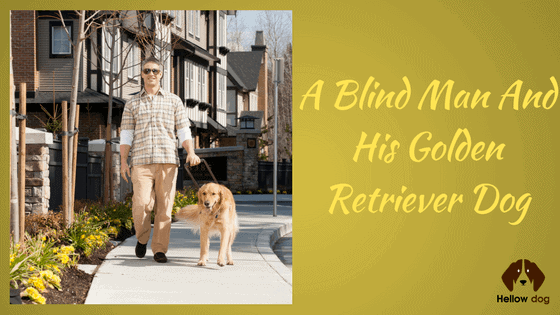Understanding the Value of Veteran Therapy Dogs
In recent years, there has been a growing demand for veteran therapy dogs. Many veterans suffer from PTSD and other mental health disorders that can be difficult to cope with. Therapy dogs can provide much-needed companionship and support to veterans struggling with these issues.
There are many different organizations that provide veteran therapy dogs. These organizations carefully screen and train their dogs to make sure they are well-suited for the job. Veteran therapy dogs are usually placed with a specific veteran or family. The dog lives with the veteran and becomes a part of the family.
The benefits of having a therapy dog are numerous. Veterans who have therapy dogs report lower levels of anxiety and depression. They also report increased social interaction and improved overall well-being
The Growing demand for veteran therapy dogs has been on the rise in recent years. This is due to the many advantages that these dogs can provide to veterans.
Some of these benefits include:
- Therapy dogs can help veterans cope with PTSD.
Studies have shown that dogs can be very helpful for people suffering from PTSD. The companionship and unconditional love that dogs offer can be very therapeutic for someone who is dealing with trauma. Dogs can also provide a sense of safety and security for someone who is struggling with anxiety and depression.
- Therapy dogs can help veterans stay active and socialize.
One of the main reasons why therapy dogs are so beneficial for veterans is because they can help them stay active and socialized. Many veterans struggle with depression and isolation after returning home from combat. Having a dog to take on walks or to play with can help veterans stay connected to the outside world and prevent them from becoming too isolated.
- Therapy dogs can provide comfort and companionship.
For many veterans, their therapy dog becomes their best friend. These dogs provide much-needed companionship and support during difficult times. They offer a non-judgmental ear to listen to and a furry shoulder to cry on. Veterans often say that their therapy dog has helped them more than any human could ever hope to.
If you are a veteran struggling with readjusting to civilian life, consider getting yourself a therapy dog. These amazing animals can provide you with invaluable assistance and support during tough times.
If you are a veteran struggling with mental health issues, consider reaching out to an organization that provides veteran therapy dogs. These wonderful animals can make a world of difference in your life.

Advantages of Having a Veteran Therapy Dog
Service dogs are not a new concept, but the idea of using them to help veterans cope with PTSD and other mental health conditions is relatively new. In the last few years, there has been a growing demand for veteran therapy dogs.
This is especially important for veterans who may be struggling with isolation and loneliness. A therapy dog can also help veterans to feel more relaxed and calm. They can provide comfort and support during times of stress.
Another advantage of having a veteran therapy dog is that they can help veterans to stay active and engaged in life. Caring for a dog can give veterans a sense of purpose and routine. Walking and playing with a dog can also help veterans to get much-needed exercise.
Lastly, veteran therapy dogs can serve as a bridge between veterans and the outside world. They can help vets to socialize and positively interact with others. Having a therapy dog can give veterans the confidence they need to re-engage with the world around them.
How Therapy Dogs Help Veterans Cope with PTSD and Anxiety
Therapy dogs are increasingly being used to help veterans cope with the psychological effects of post-traumatic stress disorder (PTSD) and anxiety. These specially trained dogs can provide much-needed companionship, support, and assistance with everyday tasks for veterans struggling with these conditions.
PTSD is a common problem among veterans of all ages, but it is particularly prevalent among those who served in combat zones. Symptoms can include flashbacks, nightmares, insomnia, anxiety, and depression. Many people with PTSD find it difficult to function in day-to-day life.
Therapy dogs can be a valuable tool in managing the symptoms of PTSD. They can provide comfort and companionship to those who are struggling emotionally. They can also help with practical tasks such as opening doors or fetching items. Having a therapy dog can make it easier for someone with PTSD to leave the house and interact with other people.
There is growing evidence that therapy dogs can help people with PTSD recover from their symptoms and live healthier happier lives. A recent study found that 87% of veterans who received therapy dog services reported improvements in their mental health, and 88% said their relationship with their dog helped them feel more relaxed.

Connecting and Bonding with a Veteran Therapy Dog
As a society, we are increasingly becoming more and more aware of the importance of mental health. With that comes a growing demand for veteran therapy dogs. Studies have shown that connecting and bonding with a therapy dog can be extremely beneficial for veterans suffering from PTSD, anxiety, and depression.
For many veterans, their time in service was incredibly stressful. They may have witnessed things that no one should ever have to see, and they may have experienced things that most of us can’t even imagine. As a result, it’s not surprising that so many of them come home struggling with mental health issues.
Thankfully, there are organizations out there that are working to help veterans connect and bond with therapy dogs. These dogs provide unconditional love and support, and they can help veterans feel more connected and hopeful.
One veteran who has benefited from this program is Jaycee Dugard. Jaycee served in the Army for six years, and during that time, she experienced several traumatic events. When she came home, she struggled with depression, anxiety, and nightmares. But then she met her therapy dog Sarge, and everything changed.
Sarge has helped Jaycee immensely. He’s always there for her when she needs him, and he has helped her to feel more connected and hopeful. “He’s my best friend,” Jaycee says. “I don’t know what I would do without him.”
If you know a veteran who is struggling, please encourage them to reach out to an organization like this one. It could make all the difference in the world.
Finding and Training a Qualified Vet Therapy Dog
As a society, we are increasingly recognizing the importance of animal-assisted therapy. Animal-assisted therapy (AAT) is a type of therapy that uses animals to help people cope with physical, mental, or emotional challenges. AAT can be used to help people deal with everything from anxiety and depression to chronic pain and post-traumatic stress disorder (PTSD).
One of the most popular types of AAT is veteran therapy dogs. Veteran therapy dogs are specially trained to provide comfort and support to veterans who are dealing with the effects of PTSD. PTSD is a very serious condition that can have a profound impact on a person’s life. Veterans who suffer from PTSD often feel isolated, anxious, and depressed. They may have trouble sleeping, controlling their emotions, and connecting with others.
Veteran therapy dogs can provide much-needed companionship and support to veterans suffering from PTSD. These special dogs can help veterans feel more relaxed and comfortable in social situations, improve their sleep, and provide them with an outlet for their emotions. Veteran therapy dogs can also help veterans connect with other people who understand what they’re going through.
If you are a veteran interested in finding a qualified veteran therapy dog, there are a few things you should keep in mind. First, it’s important to find a reputable training organization. There are many organizations that claim to offer veteran therapy dog training, but not all of them are created equal. Do your research to make sure you’re working with a reputable organization that has experience training veteran therapy dogs.
Once you’ve found a reputable organization, the next step is to find a qualified dog. Not all dogs are suitable for veteran therapy dog work. The best Therapy Dogs display certain personality traits and behaviors that make them well-suited for the job. For example, Therapy Dogs should be calm, patient, gentle, and loving. They should also be good at following commands and comfortable around strangers.
If you’re not sure where to start your search for a qualified dog, your local animal shelter or rescue group is a great place to look. Many shelters and rescue groups have programs specifically designed to place Therapy Dogs with veterans suffering from PTSD.
Once you’ve found a qualified dog, the next step is to begin training. Training is essential for both the dog and the handler (the person who will be working with the dog). There are many different types of training programs available, so it’s important to find one that’s right for you and your dog. Be sure to ask lots of questions and get all the information you need before enrolling in any training program.

Special Insurance Considerations for Veterans and Therapy Dogs
As a therapy dog handler, you may be wondering what special insurance considerations there are for veterans and their therapy dogs. Here is some information that may be helpful.
Veterans and therapy dogs have been working together for many years to help veterans recover from the physical and psychological effects of war. The growing demand for veteran therapy dogs has led to an increase in the number of organizations that provide them.
Most veteran therapy dog programs are staffed by volunteers who donate their time and expertise. However, there are some costs associated with the program, such as liability insurance, veterinary care, and training expenses. Fortunately, there are a number of organizations that help offset these costs.
One example is the United States War Dog Association (USWDA), which is a non-profit organization that provides financial assistance to veteran therapy dog programs. USWDA also offers liability insurance for handlers who participate in their program.
Another organization that provides financial assistance to veteran therapy dog programs is the Wounded Warrior Project (WWP). WWP is a non-profit organization that helps injured service members and their families. They offer a variety of programs and services, including financial assistance for therapeutic service dogs.
If you are a veteran interested in getting a therapy dog, or if you are already working with a therapy dog, be sure to check out these organizations for financial assistance. In addition, be sure to talk to your therapist or doctor about how a therapy dog can help you recover from your injuries or illnesses.
Financial Assistance for Vets Seeking Veteran Therapy Dogs
As a veteran, you may be entitled to financial assistance to help cover the costs of training and maintaining a therapy dog. The Veterans Affairs (VA) Department provides benefits for disabled veterans and their families, including service dogs for those with physical or mental disabilities. There are also various nonprofit organizations that offer grants and other types of financial assistance for disabled veterans seeking therapy dogs.
The cost of acquiring and training a therapy dog can be prohibitive for some veterans, but there are many ways to offset the expense. The VA provides service dogs at no cost to eligible veterans with disabilities. In addition, the VA covers the cost of food, veterinary care, and equipment for these service dogs. Nonprofit organizations also provide free or discounted services to disabled vets seeking therapy dogs. Various businesses and individuals have donated money to this organization specifically to help offset the costs associated with providing therapy dogs to disabled veterans.
If you are a veteran considering using a therapy dog as part of your treatment plan, be sure to check with your local VA office or disability counselor about available benefits and programs. There are a variety of benefits and programs available to veterans who are in need of assistance. One such program is the Paws 4 Veterans program which provides service dogs to veterans free of charge. This program is designed to help veterans with a wide range of needs, including those suffering from post-traumatic stress disorder, anxiety, depression, and other mental and emotional disorders. The program not only provides the service dog itself but also covers the cost of training for both the dog and the veteran.
Another benefit available to veterans is the VA Home Loans Program which provides low-interest loans to eligible veterans in order to help them purchase a home. This program can be especially helpful for disabled veterans who may have trouble qualifying for a traditional mortgage loan. In addition, there are a number of state and local programs that offer property tax exemptions or discounts to disabled veterans as well.
Finally, many employers are now offering special hiring preferences to veterans in recognition of their service to our country. This can be an extremely valuable benefit for those transitioning out of the military and into the civilian workforce. If you are a veteran seeking employment, be sure to inquire about any special hiring preferences that may be available to you through your potential employer.

Final Thoughts on Rising Demand for Vet Therapy Dogs
It’s important to understand that there is a difference between service dogs and therapy dogs. Service dogs are trained to perform specific tasks for their disabled owners, while therapy dogs provide comfort and companionship to people in hospitals, nursing homes, schools, and other settings. If you’re interested in training therapy dogs, it’s important to know that the job requires patience, compassion, and a deep commitment to helping others.
In addition to having the right personality for the job, it’s also important to have the proper qualifications. Most therapy dog trainers have at least a high school diploma or equivalent. However, some jobs may require additional education or certification. For example, the American Kennel Club (AKC) offers certification programs for professional dog trainers who wish to specialize in teaching obedience or working with specific breeds of dogs. While not required, this type of certification can demonstrate your professional credentials to potential employers and clients.
There are a variety of programs available for professional dog trainers who wish to specialize in teaching obedience or working with specific breeds of dogs. While not required, this type of certification can demonstrate your professional credentials to potential employers and clients. Some popular programs include the Certification Council for Professional Dog Trainers (CCPDT), the National Association of Canine Scent Work (NACSW), and the American Kennel Club’s Canine Good Citizen (CGC) program.
The CCPDT is a widely recognized certifying organization for dog trainers. To become certified, trainers must pass an examination that covers topics such as learning theory, ethics, instruction methods, and safety procedures. The CCPDT also offers continuing education courses for certified trainers. The NACSW is a certifying organization for dog trainers who wish to specialize in scent work training. To become certified, applicants must submit video evidence of their training methods as well as pass an exam covering topics such as learning theory, safety, and ethics. The CGC program is offered by the American Kennel Club and is designed to evaluate a dog’s ability to behave politely in various situations. Dogs who successfully complete the 10-step test receive a certificate and are recorded in the CGC database.
The program is open to all dogs, regardless of breed, age, or size. To participate, dogs must have basic obedience training and be well-socialized. They must also be up-to-date on vaccinations and free of parasites.
The CGC test consists of 10 steps that assess a dog’s ability to sit calmly while being approached by a friendly stranger, walk politely on a leash, come when called, stand calmly for examination, react appropriately to another dog, sit and lie down on command, stay in place while another person moves away from the dog, come when called from behind another person, and calm down after playing with another dog.
Dogs who pass the test earn the title of “Canine Good Citizen.” This designation can help owners find housing and work opportunities that might otherwise be closed to them because their dog does not have an aggressive or violent temperament. The CGC Program is designed to reward dogs who have good manners at home and in the community. The CGC certificate is proof that a dog has completed basic training and demonstrates good behavior around people and other dogs. To earn the CGC title, dogs must pass a ten-step test administered by an AKC Approved Canine Good Citizen Evaluator.
The first step of the test is for the handler to take their dog out on a leash to greet another person, with both owner and stranger standing still. The dog should not show shyness or aggressiveness and should remain calm while being petted by the stranger.
Step two requires the owner to walk away from their dog while another person approaches it, again on a leash, as if they were going to pet it. As before, the dog should not show any aggression or fearfulness and should stand calmly while being approached.
In step three, the handler walks past several people walking in different directions with their dogs off-leash, the handler’s own dog should remain at their side during this.







